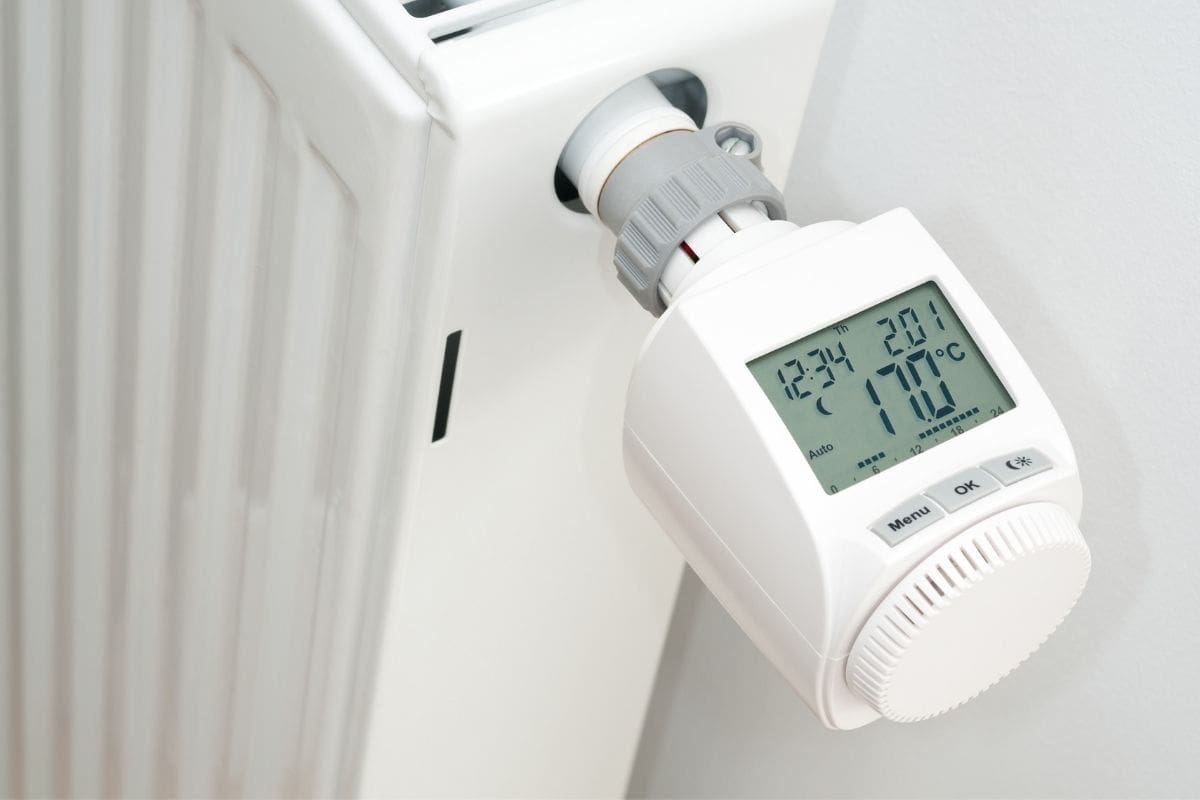It can become quite technical when trying to work out how big a radiator you need. Obviously, you need to consider the dimensions of the room to make sure that the radiator is capable of heating it.
Then you have to factor in any perceptible heat loss though attention should also be paid to ensuring you do not get a radiator that is too big.
Though a large radiator could heat up a small room in no time, it can prove expensive to run and even unnecessary.
While getting the right size of radiator is important, there are smart controls to think about and alternatives to consider that can prove more energy efficient.
One such solution may be an underfloor heating system, especially in a new home or extension.
In this guide, we will look at how to calculate the radiator wattage, how big a radiator you may need, and a smarter way to use radiators.
Calculating The Radiator Wattage
Making sure you get the right-sized radiator is important and takes into account the floor area and dimensions of the room.
Simply multiply the room’s width by its length and height to come up with the square area measurement.
You also need to factor in the room’s insulation and whether the windows are double-glazed to consider the heat loss.
Once you have all those factors and measurements, you can use a room size calculator to work out the estimated size of your radiator in kW.
How Big A Radiator Do I Need?
You will need to ensure that the radiator is fully capable of a higher heat output in kW to cover the dimensions and overcome the calculated heat loss in the room, that’s relatively straightforward.
Then you need to think about the room’s own heating requirements as the lounge and dining room should ideally be at 21°C with the bathroom slightly higher at 23°C.
Other rooms and areas can be cooler such as the bedroom at 15°C, the kitchen at 16°C, and the stairs at 18°C.
Once you have the right sized radiator you may want to think about how many radiators you need in the room and how to control them.
To be able to control the radiators, you should invest in smart controls such as WundaSmart and the smart hub.
By controlling the radiators and the water flow to use them properly, you can maintain effective heating in your home.
Introduce smart zoning to the heating in your home and you can ensure that none of that energy is wasted.
If you are using low-temperature heat sources, including heat pumps, you would need to consider larger radiators or even a few more than you may have thought.
Should you need more than a single radiator to heat a room then WundaSmart can control two of them in the same room via one smart thermostat.
However, you could simply not use radiators as an underfloor heating system like Wundatherm’s Premium+ Overfloor boards is an ideal solution for its discreet operation and how it works incredibly well with low-temperature water.
A Smarter Way To Use Radiators

Simply using radiators does not have to be the whole solution as there are alternatives and smarter designs.
Consider installing an underfloor heating system like Wundatherm’s Premium+ Overfloor boards which can save you money by proving more energy efficient.
You can also have the unused radiators turned off which may prove ideal.
Instead of deliberating over how big you need the radiator and where to put it, you could enjoy the even heat distribution of an underfloor heating system and no longer have to worry about maintaining your radiators.
The decision can be even easier when building a new home, or simply building an extension.
Look into an underfloor heating system such as Wundatherm’s Premium+ Overfloor boards as an alternative to traditional radiators and you may wonder why so many are still using them in their homes.
Not only is the system more energy efficient but should pay for itself after a few years as you can have more smart control over the heating in your home. The installation is also easier than you may think so contact us for a quote.
Final Thoughts
Finding out how big a radiator you need takes into account the kilowatts as you should have enough to heat up the dimensions of the room and exceed any heat loss.
Getting the right size is important as too big a radiator could mean wasting money on excessive heating when you do not really need it.
Ensuring that you have a big enough radiator for each room is a start yet you should look into a smart control system that works around the heating demands of your home.
Smart controls such as WundaSmart are available to manage the heating system so that it works for you and limits any possible wasted energy to reduce bills.
Frequently Asked Questions
Why Are Radiators Typically Installed Underneath Windows?
Many home constructions saw the spot under the window as the ideal place for the radiator in the room.
This has a lot to do with natural convection as the window would be where the cold air would come into a room, especially if the windows are single glazed.
As the coldest place in the room, putting a radiator under the window was seen to counteract the cold air as soon as it entered the room.
Why Are Radiators Painted White?
There is some science behind this colour choice. Surfaces that are painted black absorb heat energy and light more readily than white.
White surfaces reflect heat energy and light so project it into the room and help to move the heat effectively.
If you want to try to get the most out of your radiators then you should forget about painting them black, paint them white instead.
https://youtu.be/lGDlIZVCe18